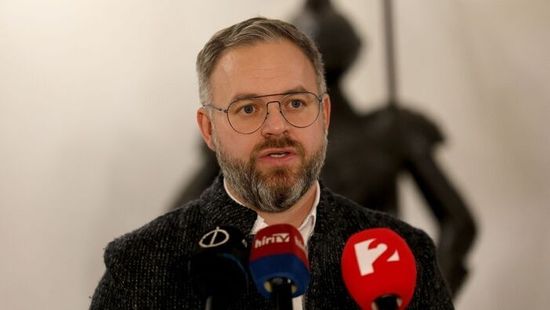Hungarian stylist Mark Lakatos is not the professional yardstick of family policy, despite what target voters left without metaphysical reference points may think. It is important to make this clear from the outset, when we have had to enshrine in constitutional law that the mother is a woman. And there is only one. These are important tautologies that help us survive the liberal zeitgeist.
There is only one mother and not many more children, 1.59 to be precise. This is a figure we are happy about, because it represents a 30% increase on the Hungarian fertility rate of 1.23 ten years ago. Since Europe's demographic disaster does not encourage Europeans to have children but to hold conferences about the topic, this increase is a source of admiration and some envy from Zagreb to Stockholm.
A Hungarian speaker at a conference regularly receives congratulations and praise for the Orban government's family policy from friendly politicians whose coalition partners in other forums are expressing 'serious concern' about the Orban government's nationalist and homophobic policies. Business as usual, why should demographic and family policies be different from other policies? At these international events where we discuss Europe's demographic tailspin, the Eastern European participants are usually genuinely interested in the specific measures of Hungarian family policy, such as what percentage of the home creation loan can be written off after the birth of the second child, etc. Western European guests are less interested, but they know the ship has sailed and they genuinely agree with everything, as they have been for decades. The shrimp sandwiches are always fresh, the coffee almost always, and they give expert lectures on how the population of the Netherlands is not technically shrinking (carefully avoiding the fact that the number of Dutch people is decreasing in the Netherlands).
Today's fertility rate of 1.59 for Hungarian women is the result of the hard work of four successive Orban governments, with a disproportionate financial outlay, unprecedented in Europe, of more than five per cent of GDP. The increase in the fertility rate is indeed high in relative terms, but for the uninitiated, the fertility rate of a biologically self-sustaining community is two - meaning that we would have to achieve at least one more increase of the same magnitude as the last ten years just to stay where we are now.
Population decline is not a recent phenomenon, although there are professional debates as to whether it dates from 1970s or in the brave new world of the fall of Socialism. Let us refrain from attaching graphs and confine ourselves to what is certain in this respect: the rapid decline in the population ran parallel to the period of loss of national wealth, which coincided with the robber privatization of state assets on the material level and the cultural terrorism of the Hungarian Free Democrat’s Alliance on the intellectual-cultural dimension. While pushing the country in total material dependency made it understandably difficult to have children, the greater damage was clearly caused by the liberal-fascist cultural hegemony: for example, that is the reason why we came to call childbearing a responsibility rather than a blessing. In the period after the change of regime, we could hardly articulate or express our instinctive opposition to the sick paradigm of liberal values. Let us not forget the two decades in which we struggled hopelessly to survive in a fetid intellectual morass whose noble traditions are now carried on by the Bartus-Perintfalvi-WMN cultural circle. In such a material and intellectual environment, dominated in every way by the local bosses of the global deep state powers, it is a miracle that there was a birth rate above zero at all.























Szóljon hozzá!
Jelenleg csak a hozzászólások egy kis részét látja. Hozzászóláshoz és a további kommentek megtekintéséhez lépjen be, vagy regisztráljon!